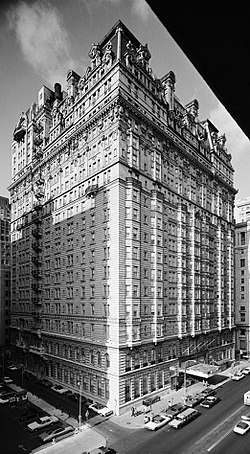An Historical Perspective

I remember when I first started practicing law in 1976 sitting in my office at my new law firm and how excited I was. Little did I realize just how exciting things were going to get or of my future involvement with the disease. One block from my new office was a hotel called the Bellevue-Stratford. It was a famous old hotel with beautiful interiors that was also the site of an outbreak of Legionnaires’ disease in which 221 American Legion conventioneers became ill from the disease and 34 died.
I recall the widespread concern shared amongst the residents of Philadelphia. One reason that the outbreak received extensive media coverage was because the investigators were unable to immediately identify the cause of the mysterious illness. Some people feared a new pandemic was just beginning to spread. What made the disease’s source so difficult to find was the lack of common factors between those affected. While it is true that all those who fell ill were attendees at the Legionnaires’ convention, that fact remained the only consistent factor. Before the disease’s discovery local papers published stories detailing every update regarding the medical investigation. Initially, it was believed to have been a new variation of the flu virus. The swine influenza, which had just been discovered, was a culprit for a time. However, some common symptoms of the flu virus, such as human-to-human transmission and a runny nose, had not been observed. Even all types of metal poisonings had been considered. Medical investigators thought they had finally identified the cause to be nickel poisoning when they found fatal amounts of the metal in tissue samples. Soon after, however, this cause was dismissed when doctors realized they had inadvertently contaminated the tissue samples with their metal tools. Another such mistake was the early rejection of a bacterium as the disease’s cause during the investigation. These kinds of problems plagued the investigation as medical experts scrambled frantically to pin down any clues.
It was not until six months after the first person became sick that investigators identified the bacterium that caused the disease. Interestingly, the bacterium had been isolated twice before in 1947 at the Walter Reed Army Institute in Washington, D.C. What prolonged the bacterium’s identification was the use of penicillin and streptomycin during attempts to eliminate external bacterial contaminants during the isolation process. When Dr. Joseph McDade finally decided to ignore the use of antibiotics in order to examine the contaminants he discovered that he had strains of Legionella pneumophila. McDade then conducted dye tests on tissue samples from the Legionnaire outbreak and found the same strains of Legionella pneumophila. By this time the outbreak was over; no new cases had come in and the casualty numbers had been finalized.
The whole experience played out like a mystery novel; every week was a new chapter in the story. At the time the story was only of passing interest due to my proximity to the hotel. I had no idea that years later it would come to be a focus area of my practice. The hotel ultimately went bankrupt due to the outbreak and has since been converted into office space and condominiums. To this day I can still see from my office window the Bellevue-Stratford’s cooling towers where the bacteria colonized.
-Jules Zacher